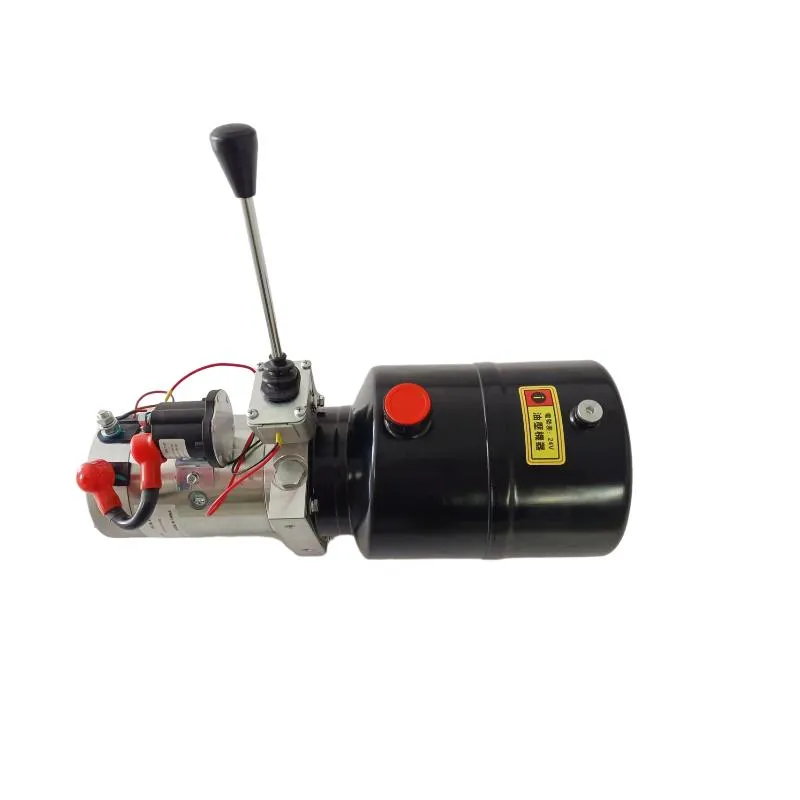Jan . 01, 2025 05:35 Back to list
Hydraulic Cylinder Overhaul Solutions from Leading Manufacturers for Optimal Performance and Longevity
Rebuilding Hydraulic Cylinders A Comprehensive Guide for Manufacturers
Hydraulic cylinders are pivotal components in various industrial applications, providing the necessary force to lift, push, pull, or move objects. Over time, these cylinders may experience wear and tear, resulting in diminished performance or failure. For manufacturers and maintenance teams, understanding the process of rebuilding hydraulic cylinders is essential to prolong their lifespan, reduce costs, and maintain operational efficiency.
Understanding the Importance of Hydraulic Cylinders
Hydraulic cylinders convert hydraulic energy into mechanical energy, allowing for powerful movements in machinery ranging from construction equipment to manufacturing systems. However, factors like operating conditions, exposure to contaminants, and inadequate maintenance can lead to issues such as leaks, reduced efficiency, and equipment downtime.
Indicators That a Hydraulic Cylinder Needs Rebuilding
Before delving into the rebuilding process, it’s crucial to identify when a hydraulic cylinder needs attention. Common signs include
1. Leaking Seals Visible fluid leaks around the cylinder are a primary indicator of worn-out seals that need replacement. 2. Reduced Operation Speed A decrease in the speed of the cylinder’s extension and retraction could signify internal problems. 3. Unusual Noises Uncharacteristic sounds like grinding or knocking during operation may suggest internal damage. 4. Loss of Pressure Inability to maintain pressure can indicate internal leaks, requiring a thorough inspection and possible rebuild.
The Rebuilding Process
The process of rebuilding a hydraulic cylinder involves several critical steps
1. Disassembly Carefully disassembling the cylinder is the first step. This includes removing the end caps, rod, barrel, and other components while inspecting each part for wear. 2. Cleaning Thorough cleaning is essential to remove old fluid, debris, and contaminants. Using a solvent and appropriate cleaning tools ensures all components are ready for inspection and reassembly.
3. Inspection Each component should be meticulously inspected for damage, wear, or corrosion. Commonly replaced parts include seals, o-rings, and rods. Manufacturers often recommend replacing any parts showing signs of significant wear.
4. Replacement of Parts Using high-quality replacement parts is crucial for the longevity of the rebuilt cylinder. Manufacturers should source components that meet OEM (Original Equipment Manufacturer) specifications to guarantee compatibility and performance.
rebuilding hydraulic cylinder manufacturer

5. Reassembly After replacing worn parts and ensuring everything is clean, the hydraulic cylinder is reassembled. It’s essential to follow proper torque specifications and assembly procedures to prevent future issues.
6. Testing Once reassembled, the hydraulic cylinder must undergo performance testing. This includes checking for leaks, measuring pressure, and evaluating the speed and operation of the cylinder under load.
7. Documentation Keeping detailed records of the rebuilding process, including parts replaced and testing outcomes, aids in future maintenance and helps track the cylinder’s performance over time.
Benefits of Rebuilding Hydraulic Cylinders
Rebuilding hydraulic cylinders rather than replacing them offers numerous advantages
- Cost Savings Rebuilding is often significantly cheaper than purchasing new cylinders. This is especially beneficial for older machines where new components may be hard to find or expensive.
- Reduced Downtime Timely rebuilds can prevent catastrophic failure, thus minimizing downtime in production or construction operations.
- Environmental Impact By choosing to rebuild, manufacturers contribute to sustainability by reducing waste and promoting longer use of equipment.
- Improved Performance A properly rebuilt hydraulic cylinder can restore performance characteristics that may have deteriorated over time, enhancing overall equipment efficiency.
Conclusion
For manufacturers, the rebuilding of hydraulic cylinders is an effective strategy to extend the life of equipment, save costs, and maintain performance. By understanding the key processes involved in rebuilding and performing regular maintenance checks, businesses can ensure their hydraulic systems function optimally, contributing to smoother operations and enhanced productivity. A commitment to quality rebuilding not only benefits the equipment but also the bottom line, making it a wise investment for any industrial operation.
-
Efficient & Reliable Double Acting Power Unit | Hydraulic Solutions
NewsAug.23,2025
-
1.5 Ton Turbocharged Cylinder 80/95-40/60-35-124 | High Performance
NewsAug.22,2025
-
High-Performance Fork Lift Hydraulic Power Units
NewsAug.21,2025
-
High-Quality Set of 50/60-45-290 471 - Precision Parts
NewsAug.19,2025
-
1.5 Ton Lifting Cylinder-Hebei Shenghan|Heavy-Duty Lifting, Precision Engineering
NewsAug.18,2025
-
1.5 Ton Lifting Cylinder-Hebei Shenghan|Precision Hydraulic Solutions&Industrial Lifting
NewsAug.18,2025
